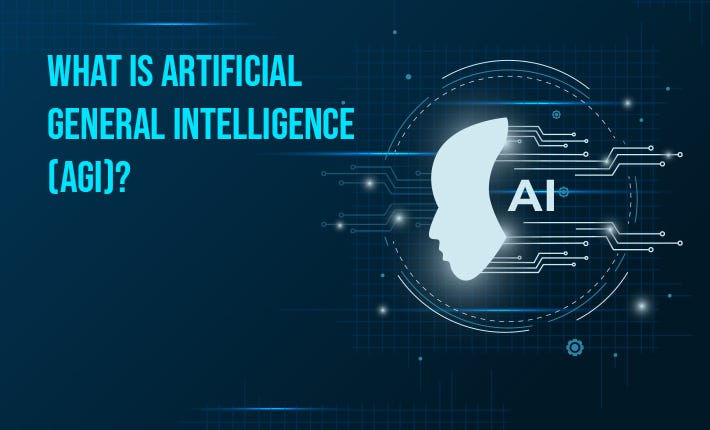Artificial General Intelligence (AGI): The Future of Human-Level AI Explained
- Abhinand PS
.jpg/v1/fill/w_320,h_320/file.jpg)
- Jun 4
- 3 min read
Artificial General Intelligence (AGI): The Future of Human-Level AI Explained
Artificial Intelligence (AI) has made incredible strides over the past decade. From smart assistants to advanced machine learning models, AI touches many parts of our lives. But the holy grail of AI research remains Artificial General Intelligence (AGI) — a system that can understand, learn, and apply knowledge across a wide range of tasks just like a human.
This article breaks down the concept of AGI, explores the latest advancements, the challenges ahead, and how it might transform our future. Whether you're an AI student, a tech professional, or just curious, you’ll get a clear, insightful picture of this revolutionary technology.

What is Artificial General Intelligence (AGI)?
AGI refers to a type of AI with general-purpose reasoning capabilities — in other words, it can perform any intellectual task a human can. Unlike narrow AI, which is designed for specific tasks (like image recognition or language translation), AGI can:
Understand context
Transfer knowledge between domains
Learn new skills without extensive retraining
Imagine an AI that can write poetry, diagnose diseases, and solve complex engineering problems all in one.
Why is AGI Important?
AGI promises to unlock unprecedented possibilities:
Automation of complex tasks: Handling jobs requiring creativity and critical thinking.
Scientific breakthroughs: Accelerating research by connecting disparate data and hypotheses.
Personalized learning and healthcare: Tailoring solutions to individual needs with unmatched precision.
However, the impact is double-edged, with ethical and safety concerns at the forefront of global discussion.
Current State of AGI Research
While true AGI does not yet exist, research is rapidly advancing:
Deep learning breakthroughs: Models like GPT-4 show impressive generalization across tasks.
Multi-modal AI: Combining text, image, and video understanding for richer interaction.
Neuroscience-inspired architectures: Mimicking human brain structures to improve reasoning.
According to a recent survey by AI Impacts, experts estimate a 50% chance of AGI development by 2060, but opinions vary widely.
Challenges in Building AGI
Building AGI involves overcoming critical hurdles:
Understanding and replicating human cognition: Our brains operate through complex, still partly mysterious processes.
Ensuring safe and ethical behavior: Preventing unintended consequences or misuse.
Scalability and computational resources: AGI will require immense data and computing power.
Ongoing interdisciplinary collaboration is essential to address these issues.
Key Facts About AGI
Fact | Details |
Narrow AI vs AGI | Narrow AI excels at specific tasks; AGI is universal |
Estimated timeline for AGI | Varied estimates from 2040 to 2100+ |
Major AGI research labs | OpenAI, DeepMind, IBM Research |
Ethical concerns | AI alignment, control, job displacement |
Potential economic impact | Trillions in GDP growth and new industries |
How AI Tools Like Pictory AI Support AGI Development
While full AGI is still on the horizon, AI-powered tools today enhance content creation, learning, and communication.
For example, Pictory AI leverages cutting-edge AI to convert scripts and text into engaging videos with minimal human input, demonstrating early steps toward more general AI-assisted creativity.
What Does the Future Hold for AGI?
The road to AGI is both exciting and uncertain. It could revolutionize industries, enhance human capabilities, and solve global challenges — but requires careful stewardship to ensure benefits outweigh risks.
By following research trends, ethical guidelines, and embracing AI tools like Pictory AI, creators and professionals can stay ahead in this transformative era.
Frequently Asked Questions (FAQ)
Q1: How is AGI different from current AI like ChatGPT?A1: Current AI is narrow and specialized, while AGI will possess broad, adaptable intelligence across tasks.
Q2: When will AGI become a reality?A2: Estimates vary, but many experts predict mid-21st century; progress depends on research breakthroughs.
Q3: What are the biggest risks of AGI?A3: Risks include loss of control, ethical misuse, and economic disruption without proper safeguards.
Q4: How can I start learning about AGI?A4: Study AI fundamentals, machine learning, cognitive science, and follow research from labs like OpenAI and DeepMind.



Comments